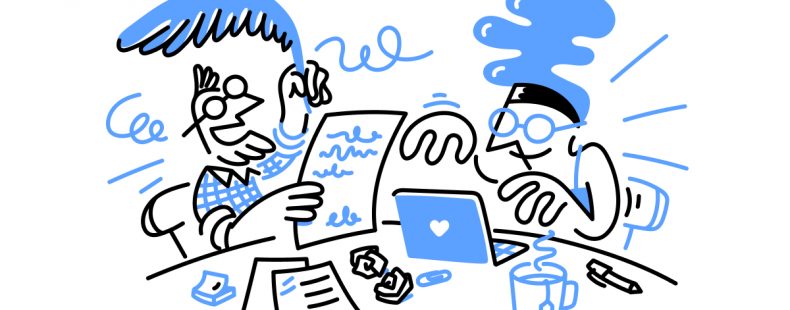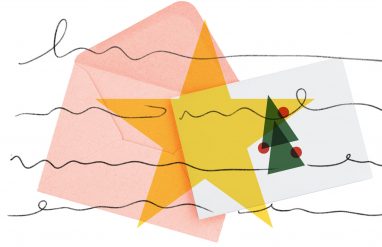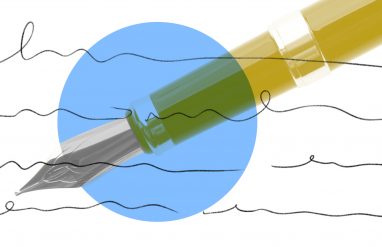We think there are a lot of aspiring poets out there just waiting to show their stuff. But you might be wondering where to even begin. Well, how about some wordplay?
Poets often use wordplay to grab a reader’s attention and hook them in all the way to the last stanza. But what even is wordplay? Well, we can explain and even do one better: we have examples of different types of wordplay in poetry. So, read on to learn a little bit more about wordplay and let the experts show you how it’s done!
Get inspired to write your own poem with our Poetry & Lyrics Challenge!
What is wordplay?
Wordplay is typically defined as “verbal wit” or, putting it another way, using words in a clever or fun way. For example, a commonly cited example of wordplay is the pun. A pun humorously uses a word with multiple different meanings and/or different words with similar sounds. An example of a pun could be I don’t play cards with big cats because they are all cheetahs.
Wordplay is frequently used both in literature and poetry. But why?
Functions of wordplay in poetry
On a basic level, a poet can use wordplay to show how clever and witty they are to an audience. Spinning that around, wordplay can also be used to make an audience aware of how clever and witty they are when they recognize what the poet has done. Making an audience feel clever is a good way to hook them in and establish a good connection so that they are more likely to enjoy the poem. Even if the wordplay isn’t groundbreaking, just making a reader laugh can increase their joy when reading a poem.
Getting more complex, a poet may use wordplay to enhance the language or effect of their poem. For example, a suspenseful poem may use harsh-sounding words to increase the tension or a gentle poem may use cute or soothing words to relax a reader. Relatedly, a poet may use words with multiple meanings to create metaphors or hidden meanings in their poem.
More pragmatically, a poet simply might use wordplay to make their particular poem more unique or more interesting to make it stand out.
Types of wordplay
There are many different types of wordplay out there. We’ve looked at 14 different types of wordplay before, but not all varieties of wordplay even have names. Often, a poet does something entirely new and witty with words that has never been done before. That is the fun of wordplay—you can play around and see what kinds of fun things you make! Here are a few examples of different types of poetic wordplay that have names:
- Palindrome: A word or line that reads the same forward and backward.
- Pangram: A line or poem that includes every letter of the alphabet.
- Alliteration: Using words that start with the same letter or similar-sounding beginnings.
- Rhyme: Using words that have similar sounds, especially endings.
- Assonance: Using similar-sounding vowel sounds to rhyme.
- Consonance: Using similar-sounding consonant sounds to rhyme.
- Onomatopoeia: Using words that sound like what they mean.
- Oxymoron: Creating a phrase using words that don’t seem to go well together.
- Neologism: Creating new words.
- Portmanteau: Combining two words together.
- Chiasmus: Reversing the order of words in parallel lines.
- Kenning: Using a metaphorical or poetic phrase to refer to something.
Examples of wordplay
OK, enough with the definitions. Let’s read some poetry! The following poems use different types of wordplay in interesting ways.
“Jabberwocky” by Lewis Carroll: Neologisms and nonsense words
“And hast thou slain the Jabberwock?
Come to my arms, my beamish boy!
O frabjous day! Callooh! Callay!”
He chortled in his joy.
“Paradise Lost” by John Milton: Neologism
And Trumpets sound throughout the Host proclaim
A solemn Councel forthwith to be held
At Pandaemonium, the high Capital
“The Faerie Queene” by Edmund Spenser: Neologism
Such were the wounds, the which that Blatant Beast
Made in the bodies of that Squire and Dame
“Lady Lazarus” by Sylvia Plath: Assonance
Soon, soon the flesh
The grave cave ate will be
At home on me
“The Bells” by Edgar Allen Poe: Onomatopoeia, Rhyme, and Consonance
What a gush of euphony voluminously wells!
How it swells!
How it dwells
On the Future! how it tells
Of the rapture that impels
To the swinging and the ringing
Of the bells, bells, bells,
Of the bells, bells, bells, bells,
Bells, bells, bells—
To the rhyming and the chiming of the bells!
“Phenomenal Woman” by Maya Angelou: Chiasmus
I’m a woman
Phenomenally.
Phenomenal woman,
That’s me.
“Beowulf” by Unknown Author: Kenning
‘Twas bright within
as when from the sky there shines unclouded
heaven’s candle.
“Because I Could Not Stop For Death” by Emily Dickinson: Alliteration
We passed the School, where Children strove
At Recess – in the Ring –
We passed the Fields of Gazing Grain –
We passed the Setting Sun













